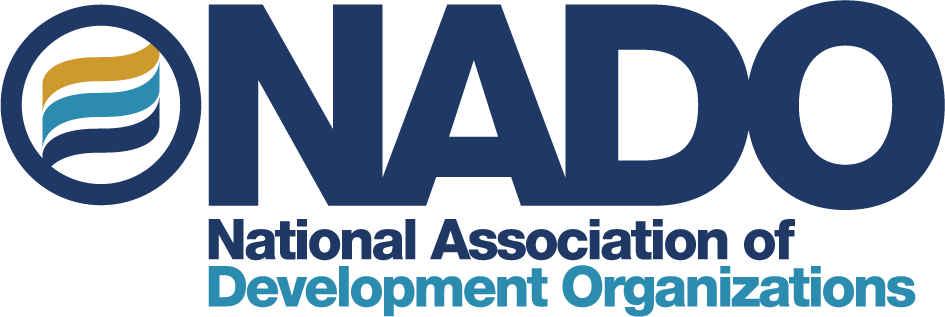
What is Green Infrastructure?
In cities, towns, and regions throughout the country, green infrastructure has emerged as a powerful tool for enhancing community livability, economic competitiveness, and resilience in the face of a changing climate. Traditional ‘gray’ infrastructure systems – e.g. roads, utilities, and water/wastewater networks – have long supported our cities and towns as they grow and develop. However, as leaders grapple with shrinking budgets and deteriorating local infrastructure, the resilience and multifunctionality of green infrastructure continues to broaden its appeal as a fiscally responsible investment for the long-term health and vibrancy of an area.
At the local level, green infrastructure is most commonly defined by site-specific design interventions such as green roofs, rain gardens, and bioswales. These interventions are engineered to slow, capture, store, and/or treat rainwater where it falls, thus lessening the burden it places on aging stormwater systems. At the regional level, green infrastructure is defined more broadly as an interconnected system of local interventions or a larger network of natural lands, working landscapes, and open spaces that provide a range of ecosystem services. Since these complex systems often span local jurisdictional boundaries, regional development organizations (RDOs) throughout the country are increasingly recognizing their growing role in the evolution of green infrastructure.
 Greater New Orleans, Inc.
Greater New Orleans, Inc.
Built among low-lying wetlands on the Mississippi delta, the Greater New Orleans region is uniquely linked to water as both its greatest asset and its greatest hazard. Although the City of New Orleans gained national attention following the devastation brought by Hurricane Katrina, the entire region faces the continued threat of storms, flooding, subsidence, and rising sea levels. To ensure that the region remains competitive in the face of these vulnerabilities, Greater New Orleans, Inc. (GNO, Inc.), the 10-parish region’s economic development alliance, supports a multi-line defense strategy that includes not only coastal restoration and engineered flood protection (i.e. levees), but also natural design solutions within the region’s urbanized areas. Signaling the growing importance of reintegrating natural systems into the built environment, GNO, Inc. recently released a ground-breaking integrated water management plan that elevates green infrastructure as a critical management component for St. Bernard Parish and the east banks of Jefferson and Orleans Parishes.

Funded through the State of Louisiana’s Office of Community Development Disaster Recovery Unit and developed by Waggonner & Ball Architects and a team of international experts, the Greater New Orleans Urban Water Plan acknowledges the hazard mitigation potential of green infrastructure, while also promoting the social and economic benefits that it will bring to the region by using natural systems to enhance and connect local neighborhoods. While it may be unusual for an economic development organization to spearhead a water management plan, GNO, Inc.’s Executive Vice President and Chief Operating Officer, Robin Barnes, explains, “We recognize that if we don’t do a really good job of sustaining our environment while reducing our flood and subsidence risk, we won’t have an economy decades from now.”According to Barnes, state and local decision makers also recognized that they needed to plan in a more resilient fashion, and green infrastructure is a smart and fiscally responsible way to mitigate future risk.
Given GNO, Inc.’s unique perspective as a regional entity, this plan provides both site-specific redesign recommendations and a regional vision for creating and connecting larger green infrastructure components across jurisdictional boundaries. By implementing the plan’s vision with an estimated $6.2 billion in investment, GNO, Inc. projects that the region would reap $22.4 billion in economic benefits over the next 50 years through job creation, increased property values, reduced insurance premiums, and reduced flooding and subsidence damage.

With the plan now complete, GNO, Inc. has turned its attention to implementation. Since funds are not readily available in capital or maintenance budgets, GNO, Inc. is pursuing creative financing solutions by fostering private-public partnerships and ultimately helping local agencies rethink how they use their limited resources more effectively. To ensure that the region has the workforce and local capacity necessary to support the emerging environmental industry, GNO, Inc. is working with community colleges and local businesses to provide workforce training and small business expansion assistance to meet the growing demand for water-related services.
Finally, GNO, Inc. is also supporting policy solutions that prioritize green infrastructure and make implementation of the Urban Water Plan easier for localities within the region. For example, there is currently a Community Zoning Ordinance before the New Orleans City Council that contains language to support the use of green infrastructure as a fundamental stormwater management strategy for new development, infill or redevelopment projects within the city limits. As with the regional Urban Water Plan, this legislation highlights the many benefits of green infrastructure, which extend beyond reducing runoff and flooding risk to improve public health, increase biodiversity, minimize energy use, promote economic development, and improve overall quality of life. With strong support for the Urban Water Plan from localities throughout the region, Barnes and others involved with the Urban Water Plan are hoping this is only one of many policy changes that help them realize the vision for a greener and more resilient region.
Key Strategies for Success:
Design rather than engineer the solutions – this is not to say that engineering is not an important component of green infrastructure, but it is critical to incorporate planning and design throughout the entire process, emphasizing the value of combining ‘hard’ engineering strategies with ‘soft’ natural design solutions
Make the economic case – in order to elevate green infrastructure as a solution, link the impacts to the economy. For example, showcase how adding street trees will reduce flooding and minimize economic disruption while also attracting new businesses and beautifying the area
Align the plan with local, state, and federal goals – it is absolutely critical to have a strong network of grassroots support, but you also must acknowledge that there are constraints on resources for implementation. In order to leverage the capital for these green infrastructure projects, you must also search for ways to integrate your vision with ongoing local, state, and federal goals
Sources:
“The Greater New Orleans Urban Water Plan.” GNO, Inc., Waggonner and Ball Architects, Sept. 2013. Web.
Personal Communication with Robin Barnes, March 17, 2015
This case study was written by Lexie Albe, Community and Economic Resilience Fellow.


